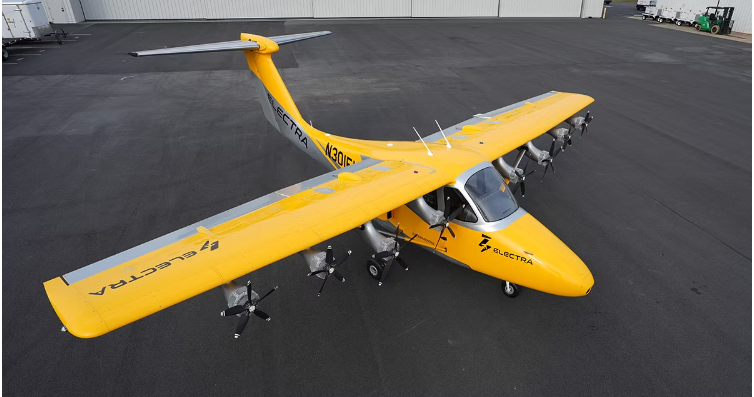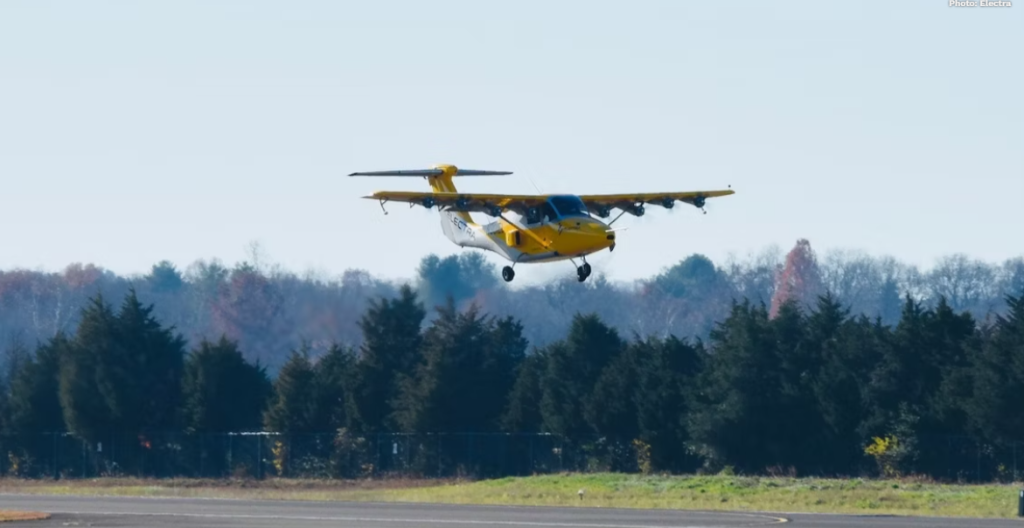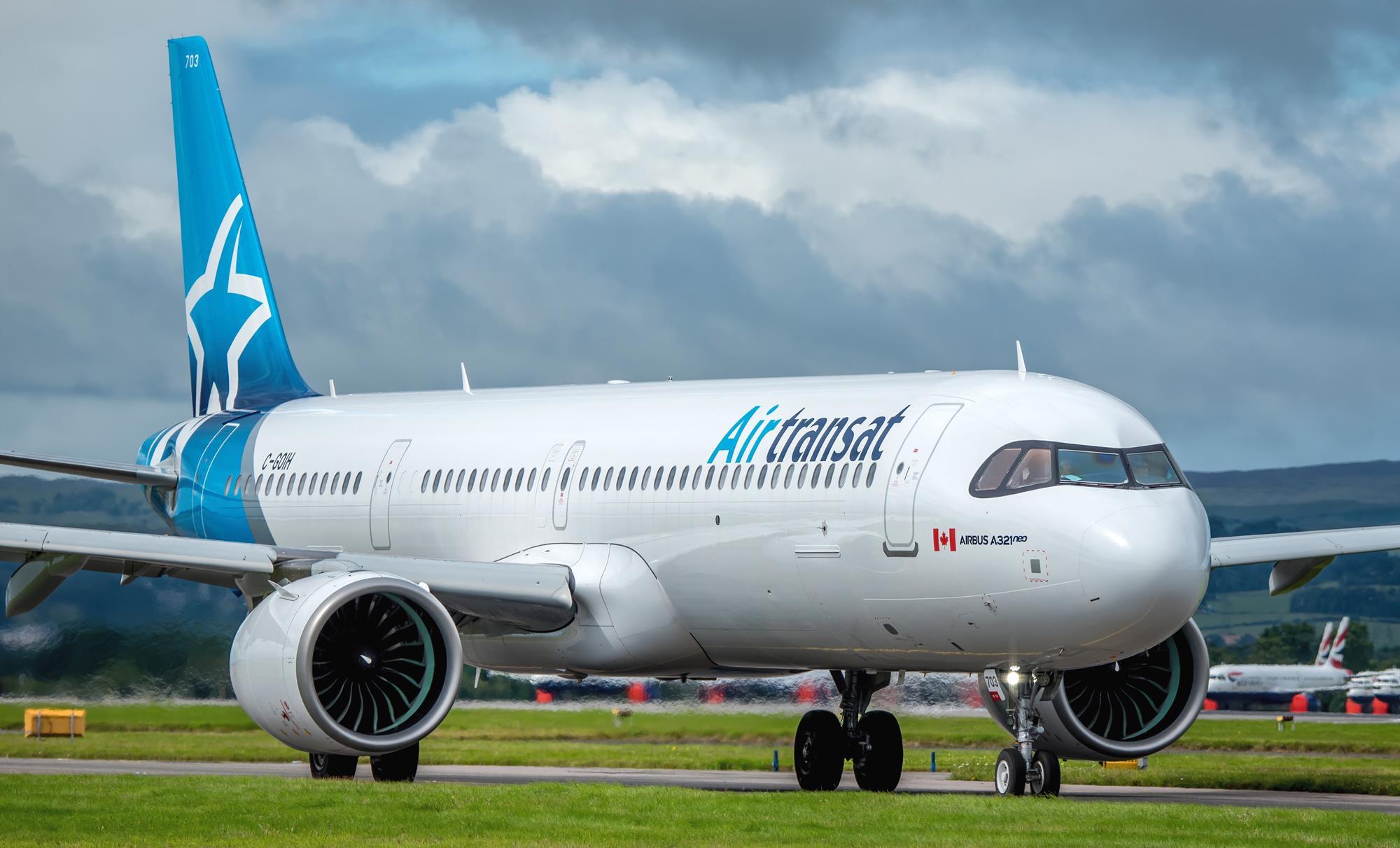
Electra, a pioneering electric hybrid aircraft manufacturer, has reached a significant milestone with the successful completion of the world’s inaugural flight of a hybrid-electric ultra short take-off and landing (eSTOL) aircraft. This achievement marks a crucial advancement in the integration of technologies aimed at minimizing the aviation industry’s carbon footprint.
The groundbreaking hybrid-electric eSTOL demonstrator, known as the EL-2 Goldfinch, made its historic debut at Manassas Regional Airport (MNZ) in Virginia, United States, in November 2023. The inaugural hybrid flight, lasting 23 minutes, soared to an altitude of 3,200 feet, covering an approximate distance of 30 miles (48 kilometers).

Distinguished by its employment of eight electric motors to enhance wing lift, the EL-2 Goldfinch leverages a combination of distributed electric propulsion and a hybrid-electric propulsion system. This innovative design not only facilitates ultra-short take-offs and landings but also results in reduced noise and emissions compared to traditional aircraft and helicopters. Electra highlights the added advantage of hybrid-electric power, providing extended ranges without the dependency on ground-based charging stations.
For a visual insight into this groundbreaking achievement, watch the video showcasing the EL-2 Goldfinch’s inaugural flight in action. Electra’s success in this venture signifies a noteworthy stride towards the future of eco-friendly aviation solutions and underscores the potential for further advancements in sustainable air travel.



